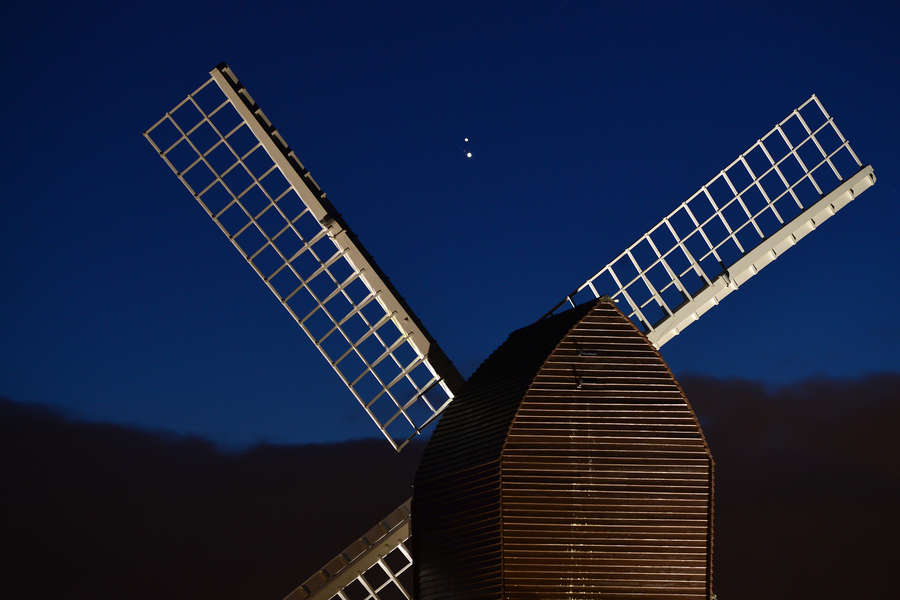
Lately, Jupiter and Saturn have been like Tom Hanks in the mid-90s. They're really hogging the spotlight. (Though, they can't claim to be America's dad.) That will continue to be the case on the night of January 10.
Just after sunset on Sunday, Jupiter, Saturn, and Mercury will form a rare triple conjunction, coming close together from our perspective. The trio will create a small, clear triangle low in the southwest sky with Jupiter sitting at the top of their planetary pyramid. The planets will actually be near each other each night from January 8 through January 11, but the tightest group will happen on January 10, per EarthSky.
You'll be able to see the trio during a short window starting about 30 minutes after sunset, which feels like it comes way too early even if the days have been getting longer since December's great conjunction on the winter solstice. Jupiter will be the brightest of those three and the first to appear as the sun's dominance of the sky wanes. It will shine about two-and-a-half times brighter than Mercury and ten times brighter than Saturn, per Live Science.
You'll want to view the event somewhere with a clear view along the west-southwest horizon because it's going to take place very low in the sky. If there are trees or buildings along your horizon, you may not see the planets. Additionally, experts such as Joe Rao at Space.com suggest using binoculars to spot the planets because the sun's brightness will make them harder to see than if this was occurring in the dead of night. (Mercury is only ever visible near sunrise or sunset due to its positioning between Earth and the sun.)
Though, you should be careful if you're bringing binoculars. The event is close to sunset, and you should never look at the sun through binoculars unless you're using a solar filter. That can cause damage to your eyes.
Of course, the planets will only appear to be close together from our perspective. They're very, very far apart in reality. The gas giants have orbits that sometimes bring them close together relative to other planets, but Mercury, the planet closest to the sun, never gets close to Jupiter and Saturn.
Additionally, this triple conjunction will be one of the last opportunities to view Jupiter and Saturn for a little while. The planets are drifting toward being entirely obscured by the sunset. Jupiter will remain visible until mid-month, per Space.com. It's a good chance to have one last hurrah with those wild gas giants.
https://news.google.com/__i/rss/rd/articles/CBMiXGh0dHBzOi8vd3d3LnRocmlsbGlzdC5jb20vbmV3cy9uYXRpb24vdHJpcGxlLWNvbmp1bmN0aW9uLWp1cGl0ZXItc2F0dXJuLW1lcmN1cnktamFudWFyeS0yMDIx0gFkaHR0cHM6Ly93d3cudGhyaWxsaXN0LmNvbS9hbXBodG1sL25ld3MvbmF0aW9uL3RyaXBsZS1jb25qdW5jdGlvbi1qdXBpdGVyLXNhdHVybi1tZXJjdXJ5LWphbnVhcnktMjAyMQ?oc=5
2021-01-10 19:14:50Z
52781291024141
Tidak ada komentar:
Posting Komentar